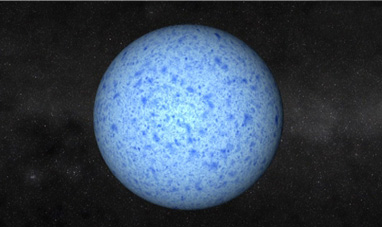Constellations are groups of stars that, when viewed from Earth, form figures in the sky. Mankind has given constellations the names of animals and mythological characters like Hercules or Pegasus. Some constellations have asterisms, groups of stars that are particularly noticeable for their brightness and the designs they form. The stars of Orion’s Belt are an example of asterisms.
In reality, the stars of a constellation can be very distant, even hundreds of light years apart from one another. Their apparent proximity depends on the particular perspective from which they are observed from earth. Modern astronomy divides the celestial sphere into 88 constellations, partitioned into three different groups according to position. The equatorials are the 34 constellations located near the celestial equator, the imaginary line which separates the celestial sphere into two hemispheres. Among those constellations we find the 12 zodiacal signs [constellations of the zodiac], which are located on an ellipse, the path traced by the sun in a year. The 18 borealis constellations are located north of the equator, while the 36 australis constellations lie to the south.
The portion of visible sky is different depending upon which area of the earth it is viewed from: therefore, a different constellation corresponds to different vantage points. Furthermore, because of the Earth’s movement around the sun, the visible constellations are not always the same during the course of a year. This is why maps of the heavens change according to observation point and season. Over the centuries, constellations have represented an important reference point for navigators and explorers. For example, by extending a line that unites the two stars of Ursa Major, you can easily spot the North Star, which always indicates north. Around 150 AD, the Greek-Egyptian astronomer Ptolemy composed the Almagest, a treatise in which he described the 48 constellations today considered “classic.” New constellations bearing the names of exotic animals and scientific instruments were added following exploration in the modern age. In the 1930’s, the International Astronomical Union fixed the number of constellations at 88. Today, constellations are a useful instrument for astronomers, providing indications of the celestial positions of heavenly bodies like galaxies or comets. Constellations are also the foundation of astrology, a divinatory art that maintains that stars influence men’s personalities and destinies.
In reality, the stars of a constellation can be very distant, even hundreds of light years apart from one another. Their apparent proximity depends on the particular perspective from which they are observed from earth. Modern astronomy divides the celestial sphere into 88 constellations, partitioned into three different groups according to position. The equatorials are the 34 constellations located near the celestial equator, the imaginary line which separates the celestial sphere into two hemispheres. Among those constellations we find the 12 zodiacal signs [constellations of the zodiac], which are located on an ellipse, the path traced by the sun in a year. The 18 borealis constellations are located north of the equator, while the 36 australis constellations lie to the south.
The portion of visible sky is different depending upon which area of the earth it is viewed from: therefore, a different constellation corresponds to different vantage points. Furthermore, because of the Earth’s movement around the sun, the visible constellations are not always the same during the course of a year. This is why maps of the heavens change according to observation point and season. Over the centuries, constellations have represented an important reference point for navigators and explorers. For example, by extending a line that unites the two stars of Ursa Major, you can easily spot the North Star, which always indicates north. Around 150 AD, the Greek-Egyptian astronomer Ptolemy composed the Almagest, a treatise in which he described the 48 constellations today considered “classic.” New constellations bearing the names of exotic animals and scientific instruments were added following exploration in the modern age. In the 1930’s, the International Astronomical Union fixed the number of constellations at 88. Today, constellations are a useful instrument for astronomers, providing indications of the celestial positions of heavenly bodies like galaxies or comets. Constellations are also the foundation of astrology, a divinatory art that maintains that stars influence men’s personalities and destinies.
RELATED


RIVERS


EAGLE


CENTRIFUGAL FORCE


GORILLA


CITRUS FRUIT


SHEEP


COMMON COLD


BIG DATA


TWITTER


ERIS


CLOUD COMPUTING


TORTOISE


NOVAE


DOLPHIN


JELLY FISH


WHEAT


TUNA


THE PRAYING MANTIS


SAGITTARIUS


STORK


TAURUS


GIRAFFE


THE SCHOOL OF ATHENS


AXOLOTL


RAVEN


THE SKELETON


THE MOON


AMAZON


THE DIGESTIVE SYSTEM


THE FEET


CANCER


GOOGLE


CHILDBIRTH


CACTUS


FALCON


NICOLAUS COPERNICUS
